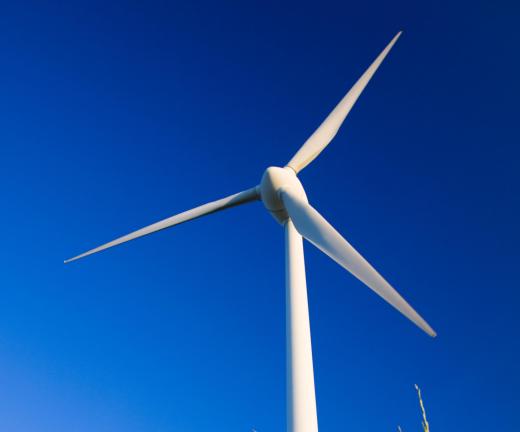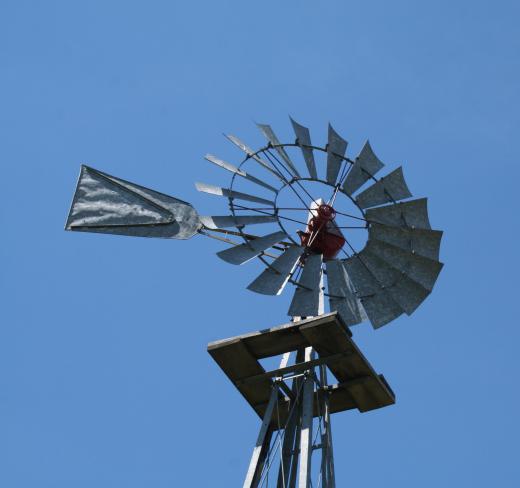A wind propeller is a mechanical device that converts wind energy into a rotational motion to produce work. These devices have been used across the globe for centuries to perform a variety of tasks including pumping water and milling grain. Wind propellers typically consist of a impeller head that drives a machine or generator through a gear box. The impeller head may be fixed or rotated to follow the wind via a rudder assembly or automated drive mechanism. Modern wind driven propellers are used extensively to generate electrical power, pump water, and to drive weather station instruments.
The energy of the wind has been harnessed in various ways to produce work for hundreds of years. One only has to think of the towing sails of the ships of years gone by or the quintessential Dutch windmill to find examples of the enduring nature of wind power. Although the wind propeller is by no means a new invention, it still sees considerable use today with the ever increasing global focus on the generation of clean, renewable electricity driving wind power technology forward at a healthy pace. Wind propellers are simple, efficient and make use of one of nature's most abundant and renewable sources of energy, thus making them ideal "green machines."

The wind propeller, or wind turbine as it is more commonly known, makes use of a simple, free spinning impeller mechanism to harness wind energy to produce work. The impellers that drive wind powered machines follow many different design trends ranging from conventional aircraft propeller types to slatted box variants. There are two basic design orientations used in wind propeller machines: horizontal and vertical. All operate on a similar principle though with the impeller set turning a shaft through a gearbox to drive various mechanisms.

Horizontal drive wind turbines are the most common types and drive mechanisms such as water pumps, generators, and meteorological instruments. The impeller designs in horizontal drive wind propellers tend to lean more towards conventional aircraft types. Weather station instruments often utilize a series or radial, bowl shaped cups as impellers while power generating wind turbines use long slim bladed designs. One feature of this type of wind propeller is that it needs to be turned into the wind to function properly. This is usually achieved by attaching a rudder to the propeller head or by turning the head electrically via a separate drive mechanism.
Vertical drive wind propeller designs typically use slatted, cylindrical box fan type impellers to drive a vertically orientated shaft. These designs are usually used for power generation and meteorological instrument drives. They are particularly effective because the total wind bearing surface of the impellers tends to be larger than conventional propeller designs. The main advantage of using this design though is that it is unidirectional and does not need to be constantly turned into the wind.
